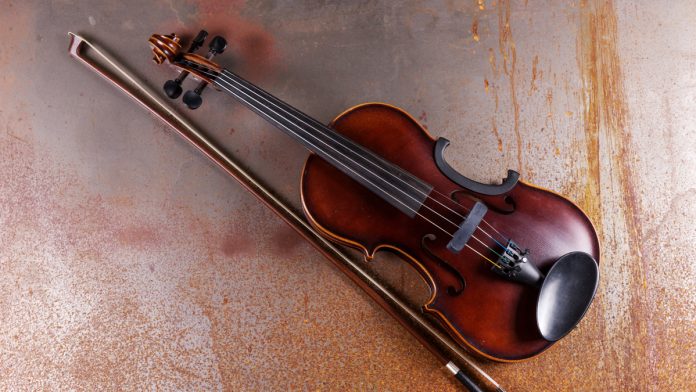The creation and evolution of the violin merges art with science. This article on the Physics and Engineering Behind Violin explores how scientific principles underlie the instrument’s remarkable sound. By delving into its vibrational behaviors, material properties, structural design, and advanced modeling techniques, we uncover the symbiotic relationship between traditional craftsmanship and modern innovation in the musical instruments industry. Each section highlights a unique aspect of violin acoustics, ensuring a balanced view where both physics and engineering intricacies are appreciated within this timeless instrument.
| Table of Contents | |
|---|---|
| I. | Vibrational Modes and Resonance Patterns |
| II. | Acoustic Impedance and Energy Transmission |
| III. | Material Anisotropy and Mechanical Properties |
| IV. | Plate Geometry and Structural Dynamics |
| V. | Bridge Mechanics and its Role in Vibrational Coupling |
| VI. | Nonlinear Dynamics and Mode Coupling |
| VII. | Helmholtz Resonance and Air Cavity Acoustics |
| VIII. | Internal Cavity Modes and Air-Structure Interaction |
| IX. | Damping Mechanisms and Energy Dissipation |
| X. | Finite Element Analysis (FEA) in Violin Design |
| XI. | Optimization Through Historical Empirical Data and Modern Engineering |
Vibrational Modes and Resonance Patterns
The violin’s tonal character arises from intricate vibrational modes and resonance patterns. When played, its wooden body vibrates in specific modes, creating harmonics that enrich the sound. Subtle differences in wood density and craftsmanship influence these resonances. This phenomenon exemplifies the Physics Behind Violin as natural frequencies interact to produce a uniquely warm, dynamic timbre that has captivated audiences for centuries.
Acoustic Impedance and Energy Transmission
Acoustic impedance plays a vital role in how energy is transferred from the strings to the violin body. The instrument’s carefully designed structure allows efficient energy conversion, ensuring that vibrations are effectively amplified and projected. This balance between impedance and energy flow results in clear sound transmission, which is essential for achieving the instrument’s characteristic brilliance and projection in varied performance settings.
Material Anisotropy and Mechanical Properties
The violin’s sound quality is profoundly influenced by the anisotropic nature of tonewoods. These materials exhibit directional properties, meaning their mechanical behavior varies with grain orientation. Selective use of spruce for the top and maple for the back and sides capitalizes on their distinct stiffness and damping characteristics. The interplay of these mechanical properties contributes significantly to the instrument’s responsive feel and nuanced tonal palette.
Plate Geometry and Structural Dynamics
The curved geometry of the violin’s plates is central to its structural dynamics. The arching not only enhances strength but also directs sound waves efficiently, amplifying the instrument’s natural resonance. Through precise shaping, makers optimize vibrational behavior and contribute to both aesthetic beauty and functional performance. This careful design work is fundamental in achieving the instrument’s rich sound and longevity.
Bridge Mechanics and its Role in Vibrational Coupling
The bridge acts as a critical mediator in transferring string vibrations into the body. Its design is pivotal for vibrational coupling, ensuring that energy is effectively shared between the strings and the wooden plates. The precise contours and positioning also influence tone quality, balance, and dynamic response—further evidence of the Physics Behind Violin, where minute adjustments in the bridge mechanics can markedly alter the sonic output.
Nonlinear Dynamics and Mode Coupling
Nonlinear dynamics emerge in the violin when vibrations interact across various modes. This mode coupling can introduce complex harmonic content and subtle tonal shifts that enhance musical expressivity. The interplay among different vibrational paths results in a rich, layered sound profile that is partly unpredictable, lending the instrument its characteristic warmth and color that continue to inspire both performers and listeners alike.
Helmholtz Resonance and Air Cavity Acoustics
A key contributor to the violin’s distinct voice is the Helmholtz resonance. The air cavity beneath the top plate functions as a resonator, magnifying lower frequencies and blending with the structural vibrations. This resonance is finely tuned through the instrument’s overall design, ensuring that air vibrations complement the direct mechanical sound, thereby enriching the overall acoustic performance on stage and in studio recordings.
Internal Cavity Modes and Air-Structure Interaction
Internal cavity modes arise from the complex interaction between the air and the violin’s vibrating structure. These subtle resonances and air-structure interactions further shape the instrument’s timbre by adding depth and warmth. The precise design of the f-holes and internal contours modulates these effects, ensuring that the instrument remains balanced and responsive across dynamic ranges, enhancing its overall musicality.
Damping Mechanisms and Energy Dissipation
Damping mechanisms in the violin regulate how energy is dissipated after a note is struck. Carefully calibrated, these processes allow the instrument to maintain clarity while preventing excessive sustain that could muddle the sound. Natural damping arises from the wood’s inherent properties, and intentional design choices refine this effect, ensuring that each note retains its distinct character and dynamic expression across various playing styles.
Finite Element Analysis (FEA) in Violin Design
Modern violin making leverages Finite Element Analysis to simulate vibrational behavior and optimize acoustic performance. FEA provides detailed insights into stress distribution, material responses, and resonance patterns, ensuring that each design tweak translates into improved sound quality. This state-of-the-art approach embodies Engineering Behind Violin, marrying tradition with computational precision to refine every nuance of the instrument’s performance.
Optimization Through Historical Empirical Data and Modern Engineering
The evolution of the violin has been driven by centuries of empirical experimentation combined with contemporary scientific advancements. Historical data on craftsmanship informs modern techniques, while cutting-edge engineering tools enhance design accuracy. This synthesis of past wisdom and present innovation continues to optimize the instrument’s performance, resonating with both tradition and technology. Such integration illustrates the profound impact of Engineering Behind Violin on creating a sound that is both timeless and exceptionally precise.

